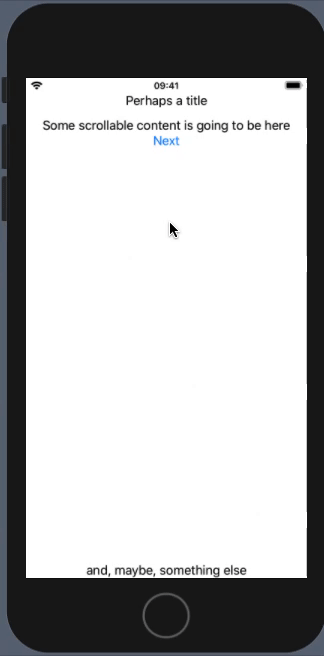在我正在开发的应用程序中,有一部分主要是“前进”导航——点击按钮将显示下一张幻灯片。然而,辅助“向后”导航也是必要的。这是我使用的方法:
import SwiftUI
struct Sample: View {
@State private var dragOffset: CGFloat = -100
var body: some View {
VStack {
Text("Perhaps a title")
ScrollView {
VStack {
Text("Some scrollable content is going to be here")
// ...
Button(action: {
// Go to the next slide
}) { Text("Next") }
}
}
Text("and, maybe, something else")
}
.overlay(
Image(systemName: "arrow.left").offset(x: dragOffset / 2),
alignment: .leading
)
.gesture(
DragGesture()
.onChanged{
self.dragOffset = $0.translation.width
}
.onEnded {
self.dragOffset = -100 // Hide the arrow
if $0.translation.width > 100 {
// Go to the previous slide
}
}
)
}
}
有一个小指标(左箭头),最初是隐藏的(dragOffset = -100)。当拖动手势开始时,偏移量被输入到dragOffset状态变量中,并且有效地显示箭头。当拖动手势结束时,箭头再次隐藏,如果达到某个偏移量,则显示上一张幻灯片。
工作得很好,除了当用户滚动 ScrollView 中的内容时,这个手势也被触发并更新了一段时间,但我认为,它被 ScrollView 取消并且不调用“onEnded”。结果,箭头指示符停留在屏幕上。
因此,问题是:做这样的手势的正确方法是什么,可以与 ScrollView 一起使用?SwiftUI 的当前状态是否有可能?
